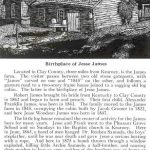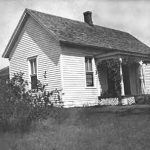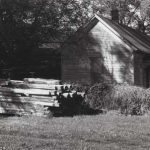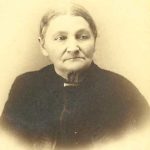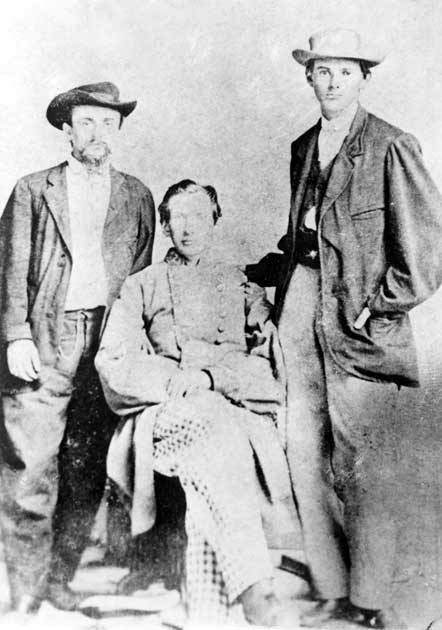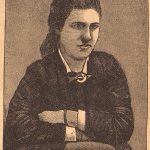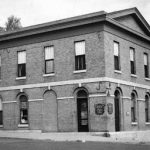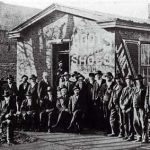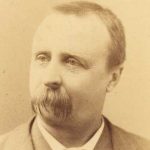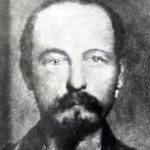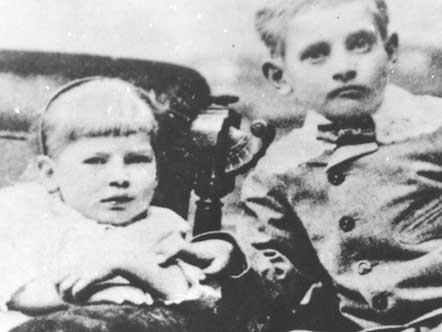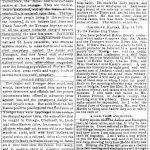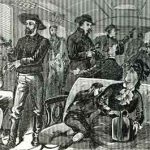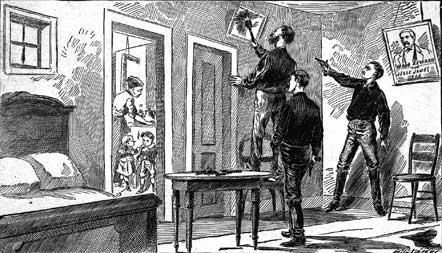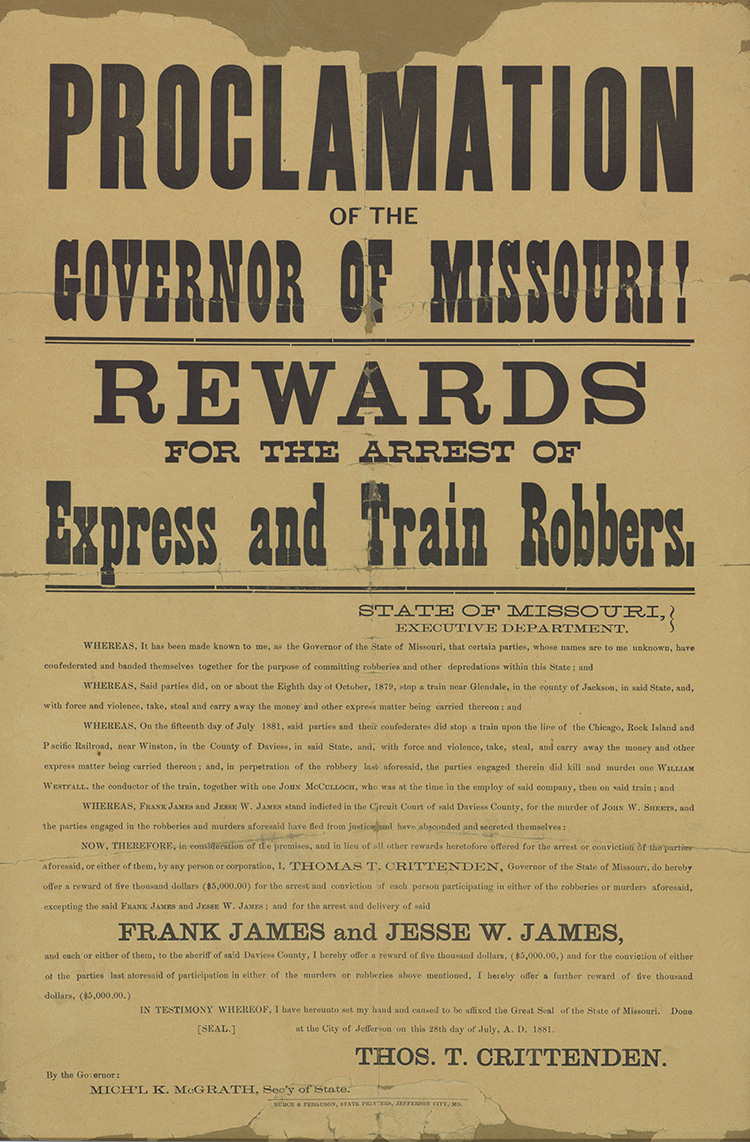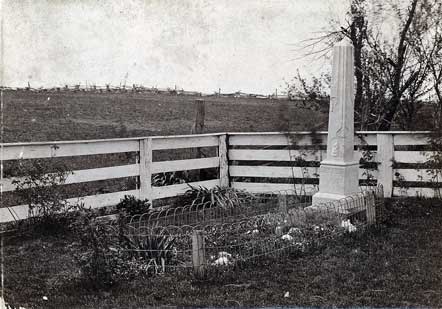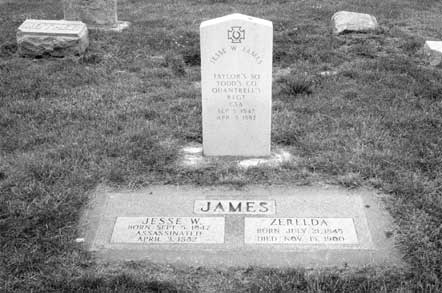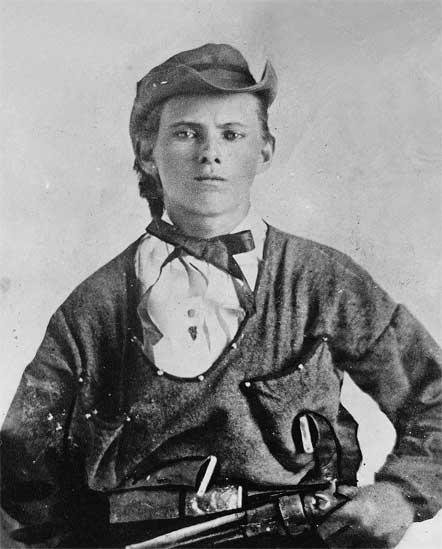
Jesse James
Introduction
Jesse James was a daring outlaw from Missouri. He became a legend in his own lifetime by committing crimes supposedly out of revenge for the poor treatment he, his family, and other Southern sympathizers received from Union soldiers during the Civil War. James sought personal recognition and publicity by writing letters to the press. His crimes terrorized innocent civilians and stifled economic growth in Missouri in the years following the Civil War.
Early Years
Jesse Woodson James was born in Clay County, Missouri, on September 5, 1847. He was the third of four children born to Robert and Zerelda Cole James, both Kentucky natives. Jesse James had an older brother Frank, a brother, Robert, who died in infancy, and a younger sister, Susan. His father was a slave-owning farmer and popular Baptist minister in Clay County. Intending to preach to the gold miners, lured by the prospect of gold, or simply restless, Robert James left his family and traveled to California when Jesse was three years old. He never returned to Missouri, dying—probably of cholera—in a gold mining camp in 1850.
The Jameses owned a hundred-acre farm where they used slave labor to grow hemp and raise sheep. When Zerelda became a widow, she was responsible for her three children as well as five enslaved children and one adult. She remarried, first to Benjamin Simms, then in 1855 to a doctor named Reuben Samuel. Known as a strong-willed, opinionated woman, Zerelda was the head of the household for years to come.
Jesse James grew up on the farm. He was both popular in the community and outwardly religious. Some townspeople believed he might become a minister like his father. The Civil War, however, derailed this possible career path.
Confederate Sympathizers and Guerrillas
As slave owners with southern roots, the James family joined Governor Claiborne Fox Jackson in supporting the Confederacy during the Civil War. Frank James fought at the Battle of Wilson’s Creek under the command of General Sterling Price and afterward joined up with Confederate guerrillas and raiders. Because Missouri was a border state with sympathies for both sides, it became the site of vicious skirmishes started by both Union militia and Confederate raiders. Each side struck brutally, harming civilians and crippling the economy.
In 1863 Union soldiers visited the James farm. They were seeking information about Confederate guerrilla bands. The soldiers hurt and threatened Jesse James and his family. Shortly after this incident, James joined his brother, Frank, and a guerrilla unit led by William “Bloody Bill” Anderson. James adapted quickly to a lifestyle that would set the pattern for the rest of his life: plan and attack, flee and hide.
In the summer of 1864, James was shot in the chest during a guerrilla raid. By the morning of September 27, 1864, however, he was well enough to be part of an eighty-man raid on Centralia, Missouri. Led by “Bloody Bill,” the guerrillas terrorized the town and murdered twenty-two unarmed Union soldiers in what is called the Centralia Massacre. Hours later, at the Battle of Centralia, the guerrillas killed and horribly mutilated over a hundred soldiers in the Thirty-ninth Missouri Infantry, U.S. Volunteers. James took credit for killing their Union commander, Major Andrew “Ave” Johnston.
Guerrillas Become Outlaws
At the end of the Civil War, Jesse James was shot by Union cavalrymen as he attempted to surrender. His cousin, Zerelda “Zee” Mimms, whom he later married, nursed him back to health while some of his former war comrades took to robbing banks and stagecoaches. Once well, Jesse began his career as an outlaw.
In 1866 the Clay County Savings Bank was robbed and an innocent bystander was shot. By 1868, Jesse and Frank James took part in robbing a bank in Kentucky. In December 1869, Jesse James’s name appeared in the newspapers for the first time. He and his gang had held up the Daviess County Savings Bank in Gallatin, Missouri. Though the robbery brought little cash, Jesse James shot the cashier, whom he thought was the man who had killed “Bloody Bill” Anderson a month after the Centralia Massacre. This act of revenge and a daring escape brought James into the public eye.
Jesse James came to crave and demand public attention. He wrote letters to John Newman Edwards, the editor of the Kansas City Times, claiming his innocence or explaining his deeds. Edwards, who wanted the Confederates to regain power in Missouri, published James’s letters. He also wrote elaborate editorials praising James as a Robin Hood figure and making him a symbol of Confederate defiance during the period of Reconstruction when Unionists were in charge of state government.
Meanwhile, the James brothers united with Cole Younger and his brothers, all former Confederate guerrillas. The James-Younger gang conducted a string of robberies from Iowa to Texas, and from Kansas to West Virginia. They robbed banks, stagecoaches, and even a fair in Kansas City. In 1873 they turned to robbing trains. In most cases, they stole money from the train safe rather than from passengers.
A Life of Crime
On April 24, 1874, Jesse James married Zerelda Mimms. Together they had four children: a son Jesse, twin boys Gould and Montgomery who died in infancy, and Mary.
Agents for the Pinkerton Detective Agency had been pursuing the James brothers since 1871. In 1875 they tossed a flare into the Samuel home. It exploded, killing James’s half-brother and injuring his mother, Zerelda Samuel’s hand, which later had to be amputated.
On September 7, 1876, the James-Younger gang tried to rob a bank in Northfield, Minnesota. The robbery was the gang’s first serious disaster. The Younger brothers were caught and sent to prison. The James brothers fled and eventually settled in Nashville, Tennessee, where they lived under assumed names. Jesse became “Thomas Howard” and Frank became “B. J. Woodson.”
Eventually, Jesse drew new men into his gang. They were not war comrades, but thugs with no loyalty to the Confederate cause. Jesse James grew increasingly suspicious of them as he continued to rob trains and hold up banks.
Wanted: Dead or Alive
In 1881 Governor Thomas T. Crittenden issued a proclamation for the arrest of Frank and Jesse James. By 1882 Jesse James had moved his family back to St. Joseph, Missouri. Still using his alias, James passed himself off as a cattle buyer and brought two new men, Robert and Charley Ford, into his gang to help him scout banks for future robberies. James was unaware that Robert Ford had already talked with Governor Crittenden about getting a reward for killing him. On April 3, 1882, Robert Ford shot and killed Jesse James. The Ford brothers were tried for murder and found guilty, but the governor pardoned them.
James's Legacy
For sixteen years, Jesse James and his gang robbed and murdered people in a half-dozen states. They held a chilling grip on Missouri. Fear of the James gang prevented many homesteaders from coming to Missouri and new businesses from investing in her economy. After James’s death, people lived with less fear, and affairs in Missouri became more peaceful and prosperous. Frank James eventually surrendered to Governor Crittenden, and Zerelda Samuel showed off her infamous son’s grave to visitors. Friends and family members who had supported and protected Jesse James during his years as a raider and outlaw remained loyal to him, even in death. He became the source of countless songs, books, articles, festivals, and movies—all of which painted slightly different pictures of this controversial Missourian. Interest in Jesse James and his legend continues to this day.
Jesse James' Grave
Text by Carlynn Trout with research assistance by Jillian Hartke
References and Resources
For more information about Jesse James’s life and career, see the following resources:
Society Resources
The following is a selected list of books, articles, and manuscripts about Jesse James in the research centers of The State Historical Society of Missouri. The Society’s call numbers follow the citations in brackets.
Articles from the Missouri Historical Review
- DeArmond, Fred. “Reconstruction in Missouri.” v. 61, no. 3 (April 1967), pp. 364-377.
- March, David D. “Sobriquets of Missouri and Missourians.” v. 92, no. 2 (January 1998), pp. 159-165.
- Settle, William A., Jr. “The James Boys and Missouri Politics.” v. 36, no. 4 (July 1942), pp. 412-429.
- Shoemaker, Floyd C. “Clay County: A Southern Heiress on the Eastern Frontier; Land of Culture, Legend, and Romance.” v. 52. no. 1 (October 1957), pp. 25-34.
Articles from the Newspaper Collection
- “The Bandit Buried.” Kansas City Times. April 7, 1882. p. 1. [Reel # 23803]
- “A Card from Jesse James. He Denies All Complicity with the Exposition Robbery.” Kansas City Times. October 20, 1872. p. 4. [Reel # 23785]
- “Jesse James. The Great Outlaw Killed in His Home in St. Joseph.” Kansas City Times. April 4, 1882. p. 1. [Reel # 23803]
- “Jesse James Shot.” Boonville Weekly Advertiser. April 7, 1882. pp. 4-5. [Reel # 1747]
- “The Murder of Jesse James.” Sedalia Democrat. April 13, 1882. p. 2. [Reel # 47018]
- “Missouri’s Gay Bandits: The Genuine James Boys and One of the Youngers.” Lexington Weekly Caucasian. September 5, 1874. p. 1. [Reel # 26459]
- “The Train Robbery. Jesse James Says He Is Innocent and Presents the Proof.” Jefferson City Daily Tribune. August 19, 1876. p. 1. [Reel # 17224]
Books and Articles
- Brant, Marley. Outlaws: The Illustrated History of the James-Younger Gang. Montgomery, AL: Elliot & Clark Publishing, 1997. [REF F508.1 J234bra]
- Christensen, Lawrence O., William E. Foley, Gary R. Kremer, and Kenneth H. Winn, eds. Dictionary of Missouri Biography. Columbia: University of Missouri Press, 1999. pp. 428-431. [REF F508 D561]
- Croy, Homer. Jesse James Was My Neighbor. Lincoln: University of Nebraska Press, 1949, 1997. [REF F508.1 J234cr]
- Dyer, Robert. Jesse James and the Civil War in Missouri. Columbia: University of Missouri Press, 1994. [REF F508.1 J234dy]
- James, Jesse, Jr. Jesse James, My Father. Provo, Utah: Triton Press, [1995], c1988. Orig. pub. 1899. [REF F508.1 J234j 1995]
- McGrane, Martin Edward. The James Farm: Its People, Their Lives and Their Times. Madison, SD: Caleb Perkins Press, 1982. [REF F508.1 J234mc2]
- Reineke, Charles E. “Violent Birth of a Legend: Jesse James and His Murderous Rise to Infamy.” Missouri Life. February 2002, pp. 48-53. [REF Vertical File]
- Settle, William A., Jr. Jesse James Was His Name: or, Fact and Fiction Concerning the Careers of the Notorious James Brothers of Missouri. Columbia: University of Missouri Press, 1966. [REF F508.1 J234s c7]
- Stiles, T. J. Jesse James: Last Rebel of the Civil War. New York: Alfred A. Knopf, 2002. [REF 508.1 J234sti]
- Triplett, Frank. The Life, Times, and Treacherous Death of Jesse James. Stamford, CT: Longmeadow Press, 1992. Orig. pub. 1882. [REF F508.1 J234tr 1992]
- Yeatman, Ted P. Frank and Jesse James: The Story Behind the Legend. Nashville, TN: Cumberland House, 2000. [REF F508.1 J234y2]
Manuscript Collection
- Crittenden, Thomas Theodore (1832-1909), Proclamation, 1881 (C2875)
Governor’s proclamation offering rewards for the arrest of express and train robbers Frank and Jesse James. - Croy, Homer (1883-1965), Papers, 1905-1965) (C2534)
Homer Croy, a Missouri native, was the author of numerous books, short stories, plays and articles. The collection contains research and manuscripts for published and unpublished work, including material on Jesse James. - Settle, William A., Jr. (1915-1988), Papers, c. 1920-1987 (C3896)
William Settle was known as an authority on Jesse James. This collection includes his research notes on the James family.
Outside Resources
These links, which open in another window, will take you outside the Society’s website. The Society is not responsible for the content of the following websites:
- The City of St. Joseph, Missouri
This website offers information about Jesse James and his death in the Jesse James house in St. Joseph. - Friends of the James Farm
This is the website for the James Farm in Kearney, Missouri, where Jesse James was born and raised. - American Experience: Jesse James
This website provides information about the PBS American Experience film about Jesse James. The film’s aim is to present “the true story of an outlaw who has captured the imagination of generations of Americans.”


